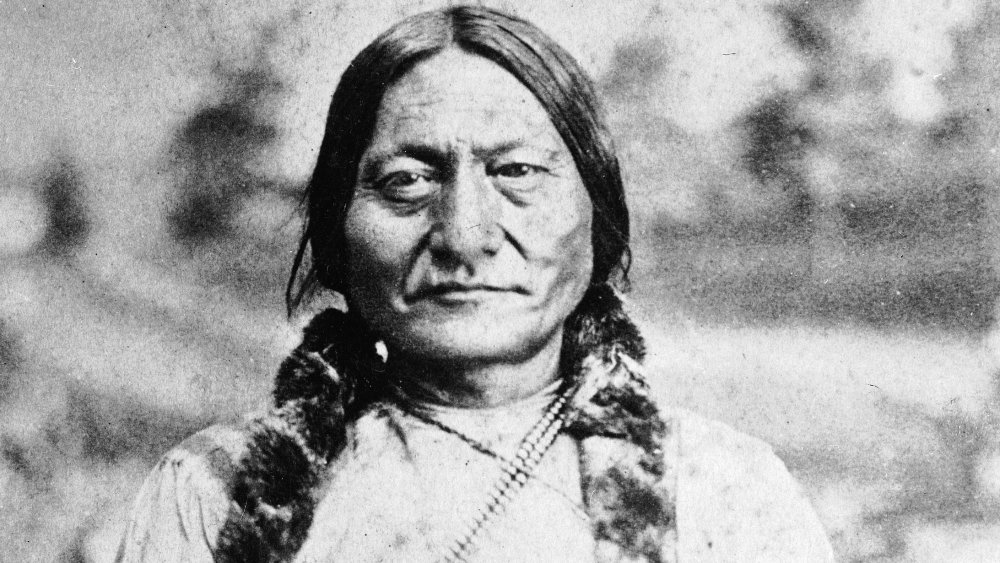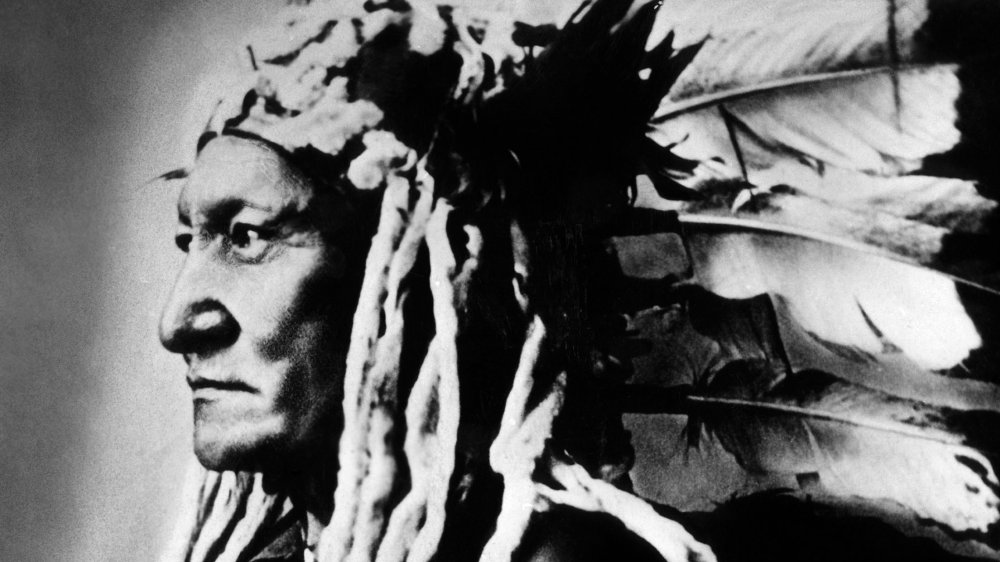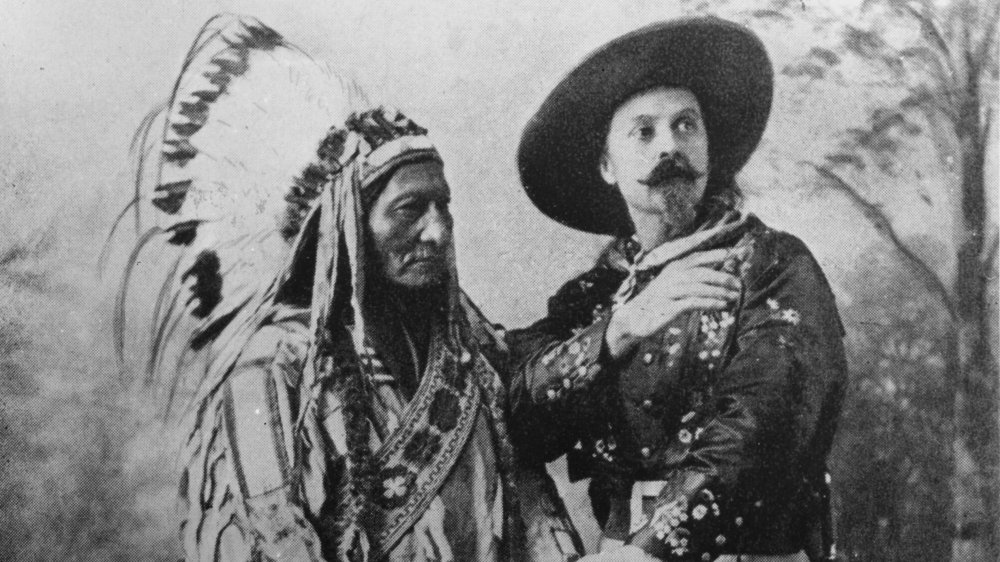The Truth About Sitting Bull's Death
The 1868 Fort Laramie Treaty ceded the western half of modern-day South Dakota to the Sioux and Arapaho tribes residing there. But Smithsonian explains that when gold was discovered in them thar Black Hills, greed became the only thing the U.S. government agreed to. In blatant violation of the treaty, U.S. settlers began invading the gold-rich hills, which History notes were sacred to the Native Americans. Unwilling to stand idly by as the U.S. grievously cheated them, the Native Americans fought back. Chief among them was Sitting Bull, a respected spiritual leader who was revered for bravery on the battlefield. Sitting Bull brought Sioux, Arapaho, and Cheyenne tribes together and led a legendary united front against the United States.
Tooting his own Little Bighorn
Many of history's greatest leaders were visionaries, but Sitting Bull also had one of history's greatest visions. In 1876, he entered a trance during a Sun Dance ceremony. A History describes, he saw soldiers dropping from the sky "like grasshoppers." He interpreted that scene to mean his people would score a huge victory over U.S. forces. In hindsight, his vision was 20/20. Weeks after the premonition, General George Armstrong Custer and more than 200 troops were "wiped out to the last man" at the Battle of Little Bighorn, according to History. However, the embarrassed American military regrouped and descended on Sitting Bull's people like a plague of locusts.
Sitting Bull's last dance
After Little Bighorn, Sitting Bull became a running fugitive. Per PBS, the U.S. intensified its efforts to force the Native Americans onto reservations, so Sitting Bull and his followers fled to Canada. Unfortunately, as The Atlantic points out, during the 1870s, the U.S. Army embarked on a mission to kill off the American buffalo (which is technically a bison), because it was a crucial food source for Native Americas. One colonel was quoted as saying, "Every buffalo dead is an Indian gone."
With "buffaloes" on the brink of extinction, Sitting Bull begrudgingly returned to the United States after four years. Confined to the Standing Rock Reservation, he was forced to do manual labor and then forcibly relocated to serve two years a prisoner of war. Upon his release, the American public regarded him as a "minor celebrity," according to History, and he became "the star of his own exhibition show." During his travels he befriended the iconic Annie Oakley, whom he dubbed "Little Sure Shot" and regarded as an adopted daughter.
In 1885, he joined Buffalo Bill's Wild West show. Though he earned $50 a week and even shook hands with President Grover Cleveland, after just four months with Buffalo Bill, Sitting Bull could no longer stand American society and returned to Standing Rock. In 1890, the reservation became the site of an attempted resurrection. Adherents of the growing Ghost Dance Movement hoped their fallen tribe members and slain buffaloes would "rise from the dead." The U.S. was spooked. Concerned that Sitting Bull would embrace the movement, police attempted to arrest him. Ghost Dancers showed up to defend the Sioux chief and a gun battle ensued. Amid the chaos, an officer shot Sitting Bull in the head and chest.


